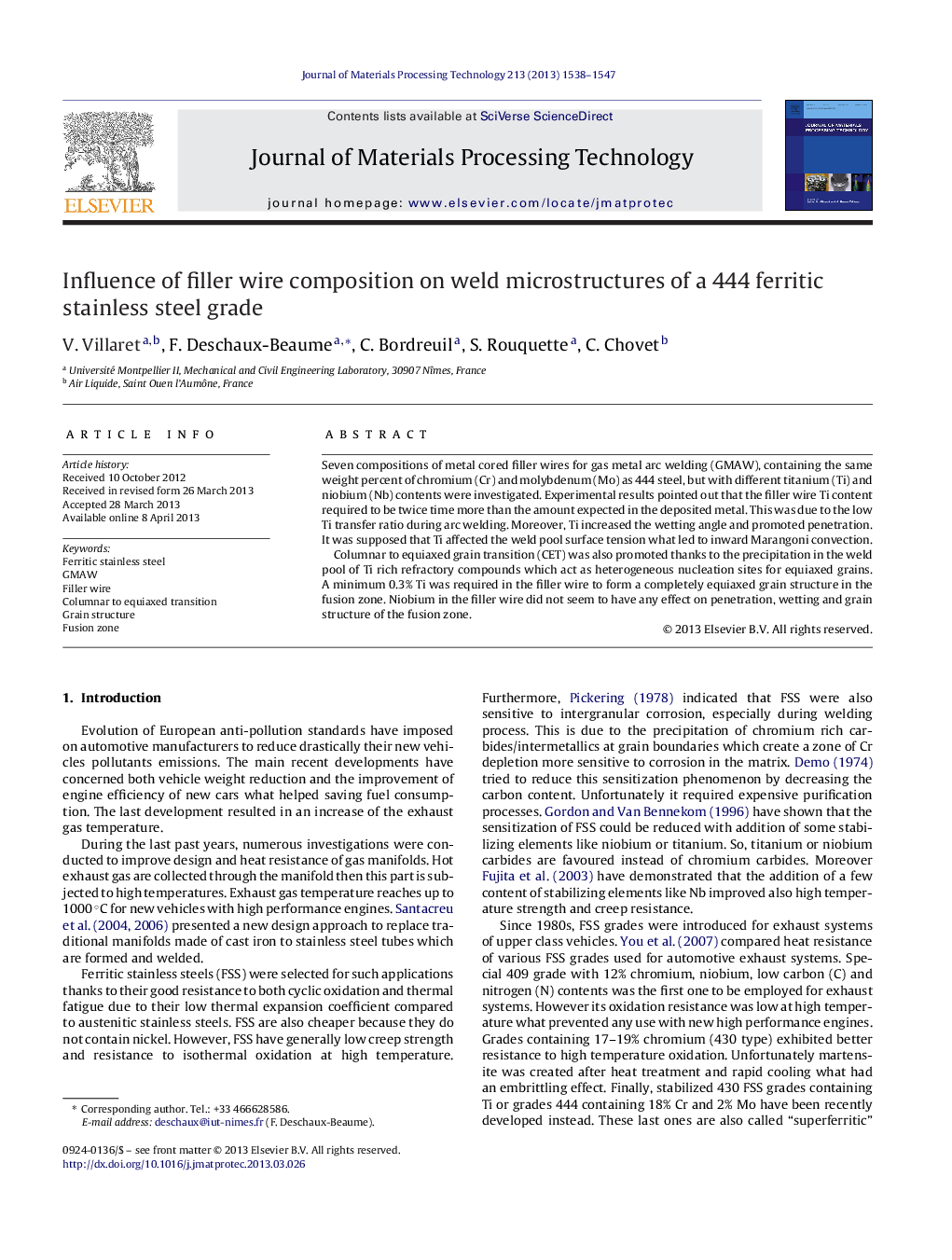| Article ID | Journal | Published Year | Pages | File Type |
|---|---|---|---|---|
| 794735 | Journal of Materials Processing Technology | 2013 | 10 Pages |
•New metal cored filler wires for welding 444 grade stainless steel are manufactured.•The effect of Nb and Ti minor elements on the fusion zone is investigated.•Titanium have a detrimental effect on wetting but increases the penetration.•Titanium promotes the columnar to equiaxed grains transition.•Nb seems to have no effect on the fusion zone.
Seven compositions of metal cored filler wires for gas metal arc welding (GMAW), containing the same weight percent of chromium (Cr) and molybdenum (Mo) as 444 steel, but with different titanium (Ti) and niobium (Nb) contents were investigated. Experimental results pointed out that the filler wire Ti content required to be twice time more than the amount expected in the deposited metal. This was due to the low Ti transfer ratio during arc welding. Moreover, Ti increased the wetting angle and promoted penetration. It was supposed that Ti affected the weld pool surface tension what led to inward Marangoni convection.Columnar to equiaxed grain transition (CET) was also promoted thanks to the precipitation in the weld pool of Ti rich refractory compounds which act as heterogeneous nucleation sites for equiaxed grains. A minimum 0.3% Ti was required in the filler wire to form a completely equiaxed grain structure in the fusion zone. Niobium in the filler wire did not seem to have any effect on penetration, wetting and grain structure of the fusion zone.
